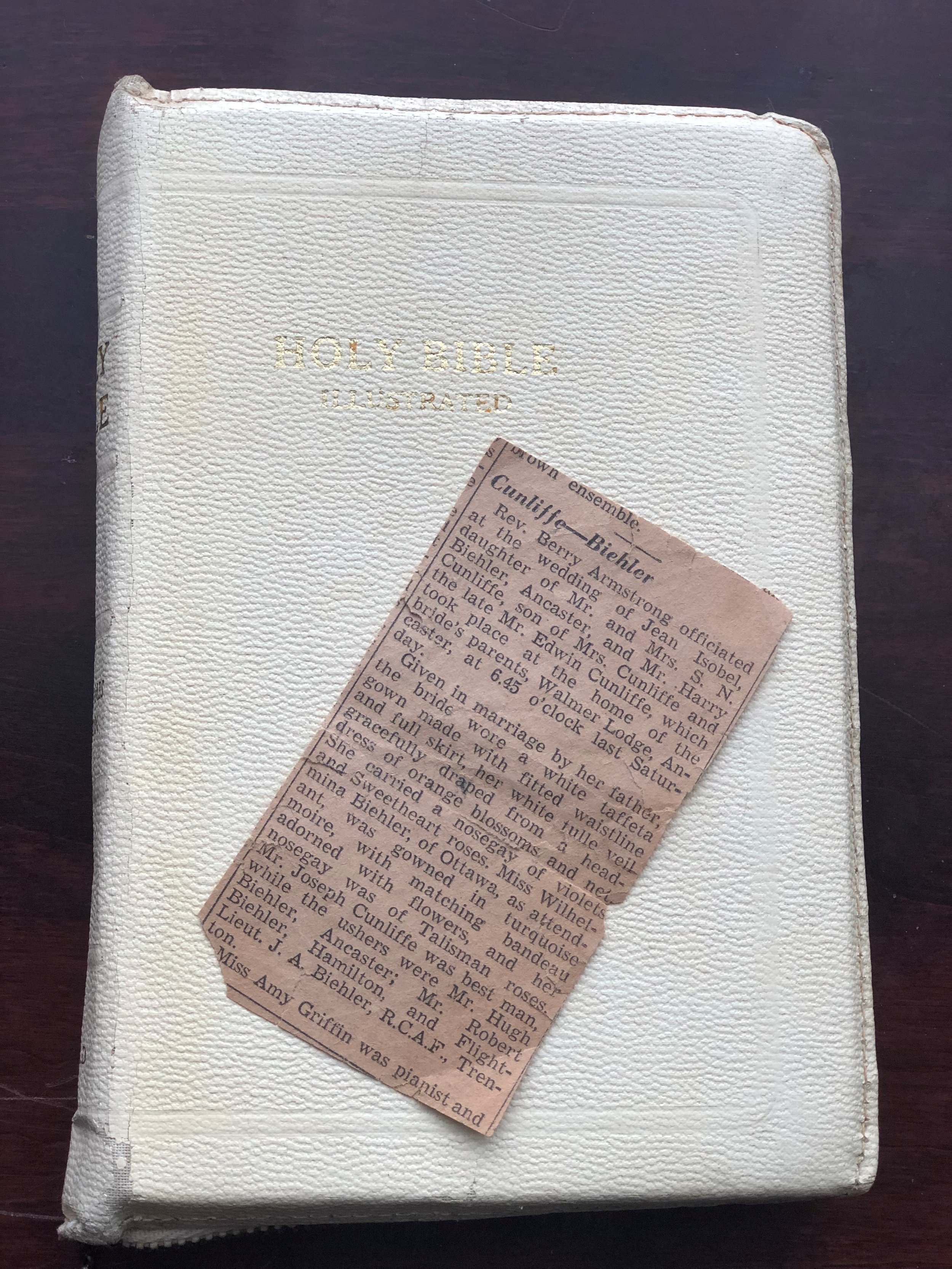“In the beginning was the Word and the Word was with God, and the Word was God”. (John 1:1)
When we were teens, my grandmother gifted each of her granddaughters with a white bible – the kind with the leather cover that zipped up on the side with a cross as the pull tab. She had spent her childhood polishing the pews of the old Scottish kirk where her grandfather was groundskeeper and believed with all her heart in the saving grace of Jesus Christ. She wanted this for us. It was such a meaningful gift that I carried it with an orchid attached as my ‘wedding bouquet.’
I am looking through it now and am surprised to find the yellowing newspaper notice from my parent’s wedding in it. Curiosity made me turn it over only to find that the flip side of this happy notice holds part of a news article about a tribunal examining the Nazi treatment of their Jewish prisoners. It is hard to take in this juxtaposition of opposites: descriptions of taffeta gowns, orange blossoms and nosegays of violets and sweetheart roses opposed to our inhumanity toward others, with Jewish prisoners forced to stoke the fires of the death chambers of those who preceded them in the line of death. My heart sinks and folds unto itself, wondering if we have learned anything in these intervening years. Wars continue; violence and inequity are rampant. In my own life, I do not always live up to the ideals of Christian love and each day is a lesson in humility and growth. How do I face this reality with the equanimity of gentleness, peace and joy that allows compassionate action?
As I flip through the pages of this precious Bible and take in the fact that it is split into two parts – Old and New Testaments – the structure of the book itself seems to be teaching the lesson of our being given a choice between opposites such as love and hate, peace and violence, life and death. All is one; the coin cannot exist without both its sides. We each contribute to the Oneness that is life. Nothing is wasted or invaluable. There is always movement to the ‘more’.
Where do you focus your attention?
What book has been your guidepost through life?
- Susan Hendricks, Associate, Peterborough Neighbourhood | former librarian and lover of books since early childhood












